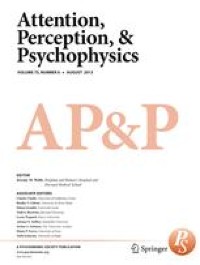Abstract
Visual attention studies have demonstrated that the shape of space-based selection can be governed by salient object contours: when a portion of an enclosed space is cued, the selected region extends to the full enclosure. Although this form of object-based attention (OBA) is well established, one continuing investigation focuses on whether this selection is obligatory or under voluntary control. We attempt to dissociate between these alternatives by interrogating the locus coeruleus-norepinephrine (LC-NE) system – known to fluctuate with top-down attention – during a classic two-rectangle paradigm in a sample of healthy human participants (N = 36). An endogenous spatial pre-cue directed voluntary space-based attention (SBA) to one end of a rectangular frame. We manipulated the reliability of the cue, such that targets appearing at an uncued location within the frame occurred at low or moderate frequencies. Phasic pupillary responses time-locked to the cue di splay served to noninvasively measure LC-NE activity, reflecting top-down processing of the spatial cue. If OBA is controlled analogously to SBA, then object selection should emerge only when it is behaviorally expedient and when LC-NE activity reflects a high degree of top-down attention to the cue display. Our results bore this out. Thus, we conclude that OBA was voluntarily controlled, and furthermore show that phasic norepinephrine may modulate attentional strategy.



No comments:
Post a Comment